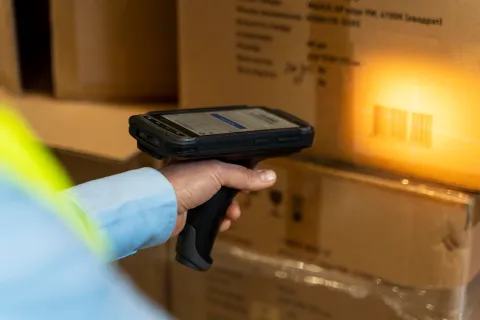
The global pharmaceutical industry faces a plethora of challenges when it comes to drug labeling. Ever-changing Regulatory requirements, products that are no longer patentable, and market pricing pressures force the industry to aim for the competitive advantage through increased efficiency.
In 2025, the complexity is amplified by global Regulatory harmonization, frequent updates from major health authorities (US FDA, EMA, MHRA, COFEPRIS, INVIMA), and the pressing need for digital transformation in pharma labeling management.
This article focuses on potential roadblocks in streamlining the labeling processes in the current situation as well as solutions to help companies better comprehend labeling considering these issues.
Here are four key labeling challenges that a company may face:
Implementing new data integration processes
Data integration and its application are a significant step towards progress for pharma labeling. However, it is challenging. As this can be seen as a substantial impediment to achieving a single, unified picture of the data, drug companies need to integrate labeling with their Manufacturing Execution Software (MES) and Enterprise Resource Planning (ERP) systems.
An advanced label management system enables it to link labels with master data, digitize the entire label creation process, and empower business users to manage change requests. Pharmaceutical businesses can use this form of data integration to address a variety of label management challenges.
Modern centralized label management platforms, powered by SaaS and AI, now support automatic integration with RIMS, ERP, and compliance monitoring tools, making global Regulatory label compliance and error-free submissions possible at scale.
Compliance Issues
Under the drug labeling regulations, such as the FDA CFR 21 part II, Eudralex Annex 11, and GAMP 5, companies must protect electronic records’ security and accuracy. Because labeling is a necessary component of a quality management system, the Regulatory process is highly complicated. Also, pharmaceutical businesses must be audit-ready and meet the expectations of business partners and customers.
While a legacy approach to labeling causes a lot of manual overhead and paperwork, leveraging a single solution for a pharmaceutical company's labeling helps with Regulatory compliance by centralizing all essential data, making track and trace much easier.
AI-enabled compliance tools now offer NLP-driven labeling reviews and real-time audit trails, drastically reducing the risk of manual errors and SOP deviations in eCTD and SPL submissions.
Achieving Cost Reduction
In the pharmaceutical industry, cost containment has become a primary concern. Once the drug enters the manufacturing process, meeting Regulatory requirements increases the product’s market entry cost. Because of this, any procedure or technology that can eliminate the need for expensive IT resources and the duplication of efforts can reduce the cost for a faster return on investment.
Pharma companies adopting automated labeling workflows and cloud-based platforms report a 40% boost in efficiency, slashing manual labor costs associated with Regulatory label management and allowing for faster updates and version control.
Supply chain management
The pharmaceutical supply chain is highly complex and involves numerous steps, as ingredients are frequently shipped in bulk, repackaged, and reshipped before reaching the manufacturer of branded products.
Through modern labeling techniques, centralized labeling systems make the entire extended supply chain more responsive to change requests and combat diversion and counterfeiting.
Serialization, blockchain-based traceability, and smart labeling (NFC/RFID) are industry standards in 2025—enabling real-time product authentication, patient engagement, and proactive supply chain security against counterfeiting and diversion threats.
The Future
According to a recent survey among pharma and biotech leaders, over 80% plan to upgrade or digitize their end-to-end labeling with AI, automation, and digital twin solutions by 2026 to address growing complexity and accelerate speed-to-market.
The above data highlights why pharma companies worldwide should realize the importance of improving their labeling processes and why they should adopt centralized, contemporary label management software.
Pharma companies should leverage digital labeling solutions, Regulatory intelligence, and global label management platforms with AI-powered automation, e-labeling, and compliance analytics to ensure speed, sustainability, and security.
Contact Freyr Solutions, your global partner in advanced pharmaceutical labeling, digital transformation, and Regulatory compliance, to accelerate your 2025 strategy today!









